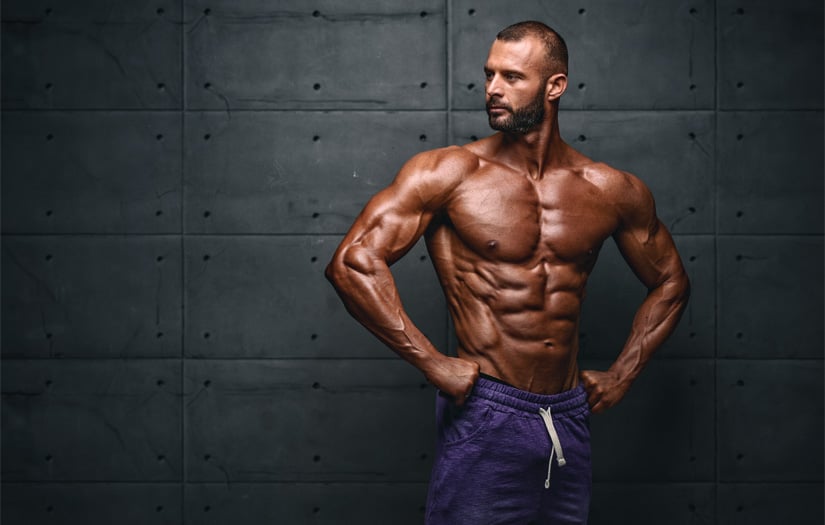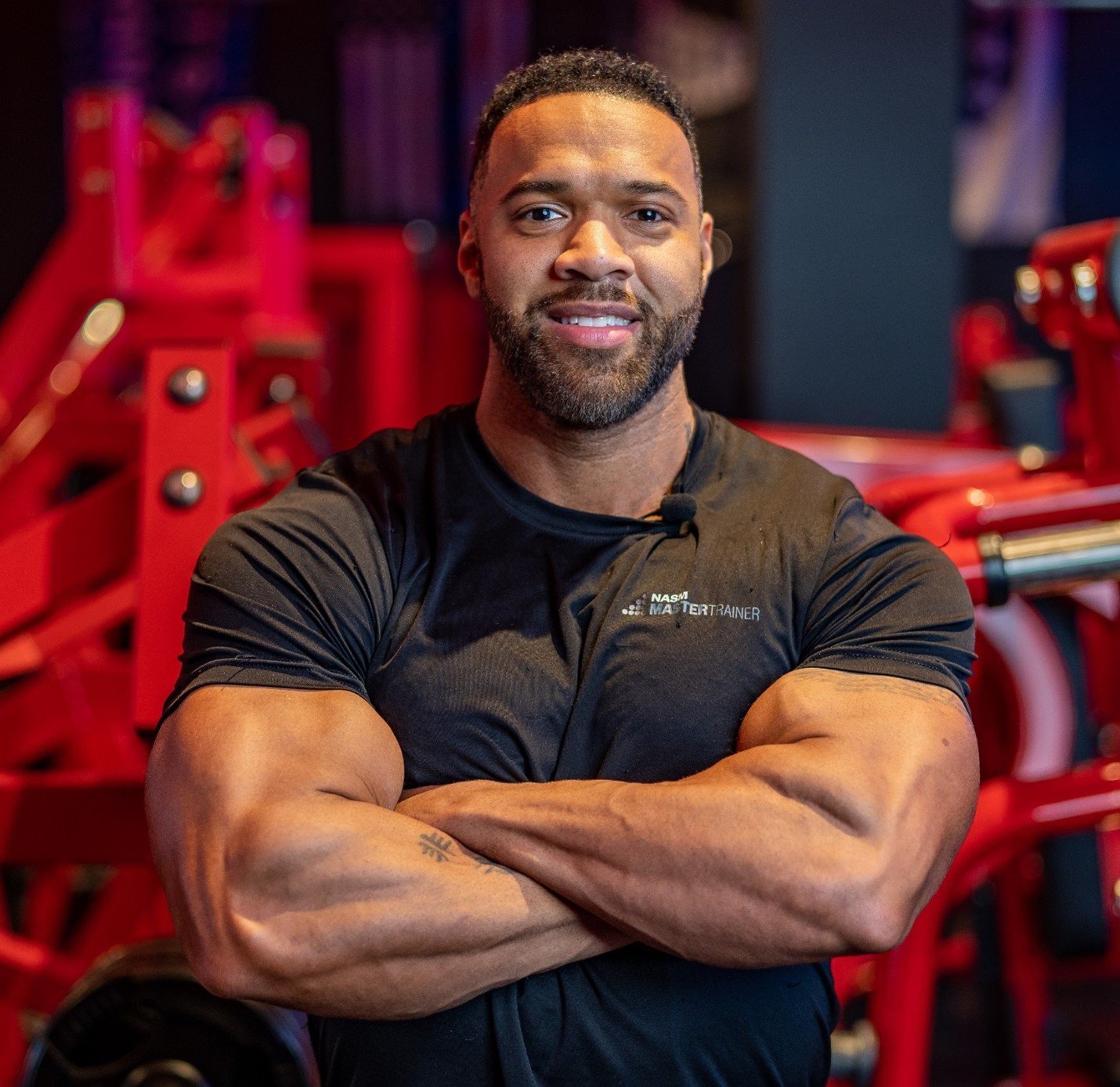Whenever we think about bodybuilding competitions, we tend to immediately think about the physique, training, and dieting regimen. One thing many competitors and coaches often overlook is how posing and stage presence can impact an athlete's performance on stage and placing.
Bodybuilding poses are one of the most important tools and skills to develop for competitors and should be practiced frequently, with feedback from coaches and judges. Here’s a breakdown of the different kinds of poses you can see more frequently at bodybuilding competitions and how to preform them.
What are the required bodybuilding poses?
Let’s break down the mandatory bodybuilding poses and what the judges are looking for.
1. Front Double Bicep
2. Front Lat Spread
3. Side Chest
4. Side Tricep
5. Rear Double Bicep
6. Rear Lat Spread
7. Abdominals with one thigh
8. Qurarter Turns
9. Men Only: Favorite Most Muscular
10. NO Gymnastic Moves Are Allowed
Front Double Biceps Pose
In the front double biceps pose judges are looking for development in the arms (primarily biceps), but it is also important to show great muscularity, a small waist, good thigh development, and an overall X-frame. In any arms-up position, it can expose deficiencies in the arms, lats, and pecs if the athlete is underdeveloped.
Common cues for executing this pose successfully are:
● Hard flex in the biceps (flexion at the elbow) with arms at roughly 90 degrees.
● Supinate the wrists to enhance the biceps peak.
● Push the elbows forward to pop the lats.
● Keep chest high (rib cage expanded) with an option to pull the waistline in (vacuum pose) or keep abdominals flexed.
● Soften the knees and push quads out to show great separation and detail in the thighs.
Front Lat Spread
The front lat spread is a great pose to show off the massive chest, lats, and upper body development in addition to great quad development. Displaying muscle fullness, density, lat width and symmetry with a good top to bottom proportions is essential in this pose.
Common cues for front lat spread:
● Grip the sides of the waist (or make a hard fist) and turn elbows out to open up the lats.
● Keep chest high, stand tall (think long spine), and expand the rib cage.
● Pull waistline in tight.
● Keep legs engaged with soft knees and quads pushed out to show separation.
● Don’t forget to smile!
Side Chest Pose
The side chest pose has evolved over the years to include more trunk rotation and more bend in the knees. Displaying broad shoulders with thickness in the arms and chest is critical. Judges will also be looking at leg development indirectly, conditioning and balance.
Common cues for the side chest pose:
● Front foot should have heel elevated.
● Slam thighs together - this helps the hamstring sweep drop to give the illusion of thicker/fuller hamstrings.
● Rotate the shoulders towards the judges and flex arms and far side pec (keep front pec relaxed).
● Posture should be upright so that you are not “falling forward”.
● Show a small waist by either pulling a vacuum pose or flexing your abs.
Side Triceps Pose
The side triceps pose shows off the thickness and mass of the upper arms as well as conditioning, and hamstring/leg development and is highly dependent on athlete mobility. There are multiple ways to execute this pose with an inline stance (same as side chest) or quad turned out.
Common cues for side triceps pose:
● Reach behind your back and clasp your hands, then lock your triceps down with full elbow extension.
● Keep your arm pressed against your side to help show fullness/thickness in the triceps.
● Keep your waistline tight and exhale to set your abs.
● Thighs should be completely pressed together (and feet together) to make the hamstring sweep drop. Feet facing the same direction as the hips.
● Play with your upper body rotation to see what looks best for your physique. For some, it may look better with trunk rotation.
Rear Double Biceps Pose
Shows are won from the back! The rear double biceps pose can reveal some major deficiencies with many competitors since the tendency is to train what you can see in the mirror harder than the back. In general, the rear double biceps is set up similarly to the FDB pose, except the back, glutes, and hamstrings are being judged.
Common cues for rear double biceps pose:
● Supinate wrists and hard flex in the biceps.
● Spike your favorite calf (behind you) with a staggered stance.
● You want to have fully engaged and open lats.
● Push elbows forward and pop the lats open.
● Flex the glutes and push hips forward while keeping hamstrings tight.
● Tilt your upper body back slightly since the judges are seated below you.
Rear Lat Spread Pose
The rear lat spread will show the development of the entire back with emphasis on mass, thickness, and detail in the lats, glutes, and hamstrings. When we are talking about the posterior chain and back development, look no further than 8-time Mr. Olympia Ronnie Coleman with his legendary “lights out lat spread” for example!
Common cues for the rear lat spread pose:
● Set base with staggered stance and spike favorite calve behind you.
● Drive hips forward and flex the glutes and hamstrings.
● Flex your lats by pulling your elbows back (similar to a row), then grip the top of your hips/waistline and turn those elbows out as you open up the lats wide.
● Tilt your upper body back slightly since the judges are seated below you.
Abdominals and Thigh/One-Thigh Pose
There are many variations of the abs and thigh pose and some are better suited for different body types. The most common is both hands behind the head with one thigh extended. Judges are looking at quad/thigh development, conditioning, abdominals, and overall shape. It is also important to have good arms and lats with a small waistline to make this pose aesthetic.
Common cues for the abs and thigh poses:
● Soften knees and extend the best quad out.
- Option to lock your leg down into full extension through the heel
- Option to push of ball of the foot and externally rotate the knee
● Rather than squishing your physique down and making the midsection look blocky, think of pushing your head back into your fists as if you were sitting on a decline sit-up bench to make the abs pop.
● Exhale and flex the abs.
● Keep biceps flexed, elbows out at 45 deg and lats flared so you don’t look narrow.
● Push hips back slightly to give the illusion of bigger thighs and smaller waist.
Most Muscular Pose
The most muscular pose in bodybuilding is intended to showcase exactly that - the most muscular physique on stage! There are variations of this pose such as standing, hands on hips, hand-over-hand, and of course the most famous is the crab most muscular.
Common cues for the most muscular pose:
● Keep legs flexed. Option to extend one quad forward (split stance).
● Hip hinge forward to showcase arms, shoulders, traps, and chest. By bending down a bit it places the upper body closer to the judges which makes you appear more massive, and also shows the full depth of the muscularity in the upper body.
● In this pose there’s no need to hold back! It’s all about the gains so flex everything as hard as you can and don’t be afraid to get a little wild!
● Tip - if you have long narrow arms or underdeveloped shoulders you may want to opt for a more upright version of the most muscular so you don’t call attention to any deficiencies.
Bodybuilding Quarter Turns
Reference NPC News Online for rules -
● Keep your feet flat.
● Keep your heels together.
● Hold your arms at your sides.
● No excessive twisting.
● Your head must be facing the same direction as your feet.
Why is Posing So Important in Bodybuilding?
Posing is crucial in bodybuilding and can make a significant impact on where an athlete places in a competitive lineup. Although not directly scored, it can hinder the other scoring criteria such as muscularity (overall muscle development), shape (symmetry and proportions), conditioning (body fat, muscle fullness, separation, dryness), stage presence and poise, and confidence.
In reality, nobody has a perfect physique, so the goal is to minimize the number of visible flaws presented on stage, showcase your strengths, and package it all together with a great stage presence and captivate the judges and audience.
How Often Should You Practice Posing?
This can vary, but a good rule of thumb is to practice weekly in the off-season to maintain flexibility, mobility, and muscle memory. During contest prep, it’s a good idea to ramp up your posing practice multiple times per week or even daily heading into the show. Other benefits include increased mind-muscle connection, additional energy expenditure (which can replace some cardio), and muscle memory.
How to Practice Poses Effectively
1. Perform static and dynamic stretches daily to increase muscle flexibility and joint mobility. Emphasis on hip and trunk mobility.
2. In the beginning, it is great to use a mirror for visual feedback to adjust your posture and learn each pose. As you get closer to a contest, avoid relying on mirrors and instead work with a posing coach or video yourself to encourage mind-muscle connection and feel each pose.
3. Kinetic chain checkpoints when you set each pose: feet, knees, hips, trunk, arms, Breathing/abdomen control. Run through this scan in your mind every time you set a pose.
4. Practice vacuum poses and training the transverse abdominals to shrink up the waistline on stage.
5. Individual routine - choreography takes lots of repetition and time to master. So be sure to practice your routine with music at the beginning of prep through the game day!
6. If you are a coach, give your athlete verbal cues or taps to engage specific muscles, correct posture, etc. Intrinsic cues tend to work best and physically helping move joints or repositioning is by far the most effective means of teaching poses.





-1.png?width=723&name=MicrosoftTeams-image%20(4)-1.png)






